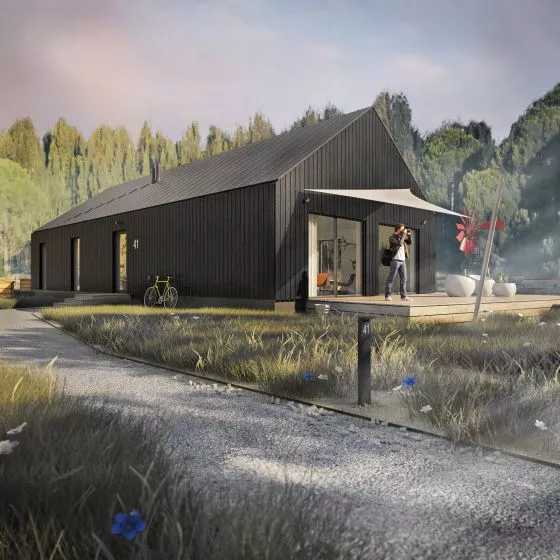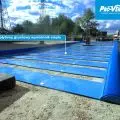emblems of modernism
I'm not sure if, by extracting the communist-era balustrade from the plastic for Zachęta's monumental lobby, this is what Monika Sosnowska wanted to convey to us, but therein lies the value of her works: the artist gives us only slightly processed, familiar and recognizable elements of our reality, helping us simply look at them in a different way. Or to see them at all. Sosnowska's sculptures are abstract, striking, highly photogenic, seem overscaled and even monumental. Despite this, it is not difficult to see in them elements perfectly familiar from the reality that surrounds us every day - doorknobs, stairs, fragments of steel skeletons of buildings and reinforced concrete reinforcements. Metal constructions, precisely welded painted, shine like works of art, and at the same time rivets and screws are visible in them, leaving no doubt that we are dealing with structural elements, "taken out" of the solids in which they usually remain invisible. This gesture alone makes the viewer think about the genesis of these objects, searching for their place of origin.
In many of her works, the artist pits the endurance of the original raw materials of contemporary architecture and construction. She does not relate these explorations to the history of architecture or sculpture, although this total work is in line with various traditions: constructivism, minimalism, conceptualism or the radical transformations in sculpture made by Robert Morris, Richard Serra, Gordon Matta-Clark or Charlotte Posenske, among others, introducing new artistic values in the architecturalization of sculpture," writes Maria Brewinska in the curatorial text.
Monika Sosnowska's works, which are in many international art collections, presented in the world's best museums and galleries, well-known and appreciated, have already been repeatedly described and analyzed in terms of art history and philosophy. However, what seems most interesting about them from the viewer's perspective is their evident association with buildings and structures, with elements of the architecture we use, are familiar with, in which we live.
"Still Life" exhibition at the Foksal Gallery Foundation, Warsaw, 2015
Photo: Bartek Górka © Monika Sosnowska, Foksal Gallery Foundation
With her sculptures, Sosnowska inspires reflection on architecture, its durability, solidity, endurance. Creating complex compositions from rebar or steel structural elements, she points out the paradoxes of modern engineering, and above all the modernist myth according to which skeletal structures and reinforced concrete structures were supposed to raise construction to a higher level of both functionality and durability. How illusory it turned out to be, we can see in the buildings that have aged badly, come under criticism and are not at all as durable as intended.
Monumental, Brutalist painted metal sculptures, reproducing facades, staircases, balustrades with handrails, lamps, handles and structural elements, refer to the rationalism of architecture, the logic of which is questioned and transformed. The results are functionless objects unfettered by the resistance of the raw material used, but also evoking the fiction and utopia of the avant-garde. The consequence of such actions is the impression of plasticity of matter and the illusion of its lightness," writes Maria Brewinska.
Monika Sosnowska, however, does not directly criticize modernism, but rather encourages the viewer to look in a new way at the space created by it, in which he lives every day, after all. What's more, the steel sculptures can also be a starting point for reflecting on the future of even newer architectural inventions, those we admire today (just as the world was excited by modernism more than 100 years ago). Architecture is extremely rare as a subject for art, which is all the more strange since it really affects everyone on the planet. Sosnowska skillfully, in an impressive yet accessible way, gives an examination of modernism, which is, after all, not just a style of building, but a philosophy that has shaped modernity far more than by filling it with reinforced concrete buildings.














































